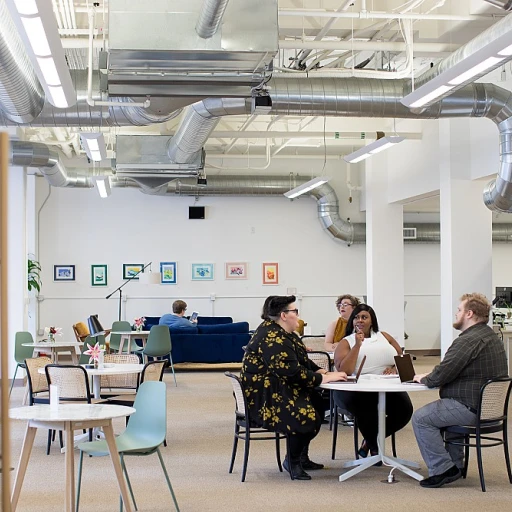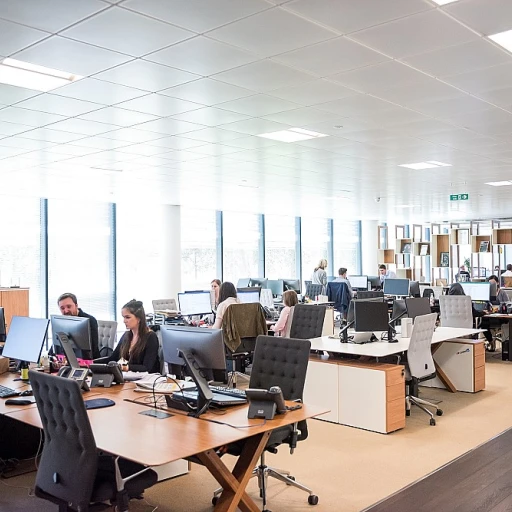-large-teaser.webp)
The Basics of Composable CMS
Discovering the Foundation of Composable CMS
A composable CMS stands as a contemporary evolution in the realm of content management systems. Unlike traditional CMS platforms that often present limitations with their monolithic architecture, a composable CMS emphasizes modularity, flexibility, and a reusable approach to managing content. This allows businesses to more effectively manage and deliver digital experiences across varied platforms and channels.
In the landscape of content management, a composable approach offers significant advantages. It integrates seamlessly with other components, including headless CMS and third-party tools, enabling a more efficient use of digital resources. This composable architecture supports a system where content can be rapidly assembled, modified, and deployed, enhancing the overall digital experience for users.
Organizations embracing this technology gain the ability to manage content dynamically, acting in response to changing business needs without the constraints that typically accompany traditional CMS platforms. By leveraging composable CMS solutions, businesses can craft tailored experiences that resonate with target audiences, driving engagement and fostering deeper customer connections.
It's also essential to recognize the role of composable digital experience platforms (DXPs) within this ecosystem. These platforms expand the capabilities of a composable CMS by facilitating a unified approach to content delivery and user interactions. Such flexibility is critical in enabling businesses to create bespoke digital experiences quickly and efficiently.
As companies navigate the complexities of change management, the transition to a composable CMS is a pivotal step. By harnessing the potential of modular components and headless architecture, enterprises can adapt and thrive in an ever-evolving digital marketplace. To explore how these systems can enhance supplier performance in your organization, visit the innovative management software blog post for further insights.
Why Flexibility Matters in Change Management
The Importance of Flexibility in Navigating Change
In the fast-paced landscape of digital transformation, the concept of flexibility has become pivotal for businesses aiming to stay competitive. A composable CMS offers a change management solution to enhance efficiency and agility by leveraging its modular approach. This approach allows organizations to seamlessly integrate new components into their existing systems without disrupting ongoing operations. The inherent agility of a composable architecture enables businesses to adapt swiftly to changes, a critical aspect in today’s ever-evolving market.
Unlike traditional CMS platforms, a composable CMS offers a more dynamic environment where content, applications, and experiences can be adjusted in real-time. This capability is crucial when managing digital content across various channels and ensuring consistent digital experiences. By focusing on reusable components and structured content, businesses can efficiently manage content delivery and coordinate efforts across disparate teams.
- A composable CMS is designed for adaptability, allowing businesses to tailor digital experiences to their specific needs.
- It supports a headless architecture, providing flexibility in choosing the best-in-class tools, whether they are open source or third party.
- Investing in a composable CMS can streamline the integration of new digital experience platforms, reducing time-to-market for new initiatives.
Flexibility in a composable CMS also comes from its ability to operate as a composable DXP, dealing with multiple aspects of user interactions and content management without being tied to a single platform. By choosing a system that incorporates both modular design and robust management capabilities, businesses can effectively navigate not only current change management challenges but also prepare for future shifts in the digital landscape.
Integrating Composable CMS into Existing Systems
Seamlessly Blending Composable CMS with Existing Infrastructures
Integrating a composable CMS into your current digital ecosystem can appear daunting at first, yet the advantages it brings to content management and delivery systems are well worth the effort. The architecture inherently promotes a modular approach that allows for individualized digital experiences tailored to the needs of your business. The key is understanding how a composable architecture offers flexibility when it comes to incorporating new digital tools or adjusting existing ones. Unlike a traditional CMS, where content and presentation layers are tightly linked, a composable CMS with a headless architecture offers separation. This means your content can flow seamlessly across various platforms and devices, making it easier to manage and deliver customized digital experiences. When integrating a composable CMS, businesses must prioritize:- Adopting Reusable Components: Leveraging modular content components can significantly increase efficiency. It allows for quick adaptations and the easy creation of new digital content across different CMS platforms, providing a tailored experience without redeveloping from scratch.
- Utilizing Third-Party Support: A strong benefit of composable systems is their compatibility with third-party services. Integrating these can enhance the functionalities of your CMS without significant time investments.
- Ensuring Structured Content Delivery: Structured content management is streamlined, enabling precise targeting and personalization. This leads to consistent user experiences across all digital experience platforms.
Challenges in Adopting a Composable CMS
Overcoming Barriers to Effective CMS Adoption
Adopting a composable CMS can significantly transform digital experiences and content delivery strategies for businesses. However, this transformation is not without its hurdles, which often center around integration complexities and organizational resistance to change.
One of the primary challenges is integrating a composable architecture into existing systems. Many organizations still operate on traditional CMS platforms where content management, delivery, and front-end applications are tightly coupled. Making the shift to a headless, or composable, CMS means rethinking how content is managed and delivered, emphasizing a modular approach.
Organizations need to embrace a flexible digital experience platform (DXP) that supports a diverse set of tools and components. The effort to migrate content, modify workflows, and ensure compatibility with third-party applications can be daunting. These hurdles require not just a technological shift but also a change in mindset to focus on creating seamless digital experiences using reusable components.
Another significant concern is the user training and support required to fully leverage the capabilities of a composable DXO. Content creators and managers must familiarize themselves with the new system’s features to efficiently manage content and contribute to improved experiences. This calls for comprehensive training programs to accompany the composable CMS integration process.
Moreover, businesses are often hesitant to relinquish a familiar system that has served them well, despite the long-term potential of a composable CMS. Resistance to change is a common issue in organizational management, and addressing it requires clear communication of the benefits and a stepwise approach to implementation.
Security and data management present additional challenges. As businesses integrate multiple digital platforms and tools, ensuring robust content security and compliance becomes paramount. The open source nature of some headless CMS platforms may raise concerns about vulnerabilities, necessitating a precise strategy to safeguard digital content.
To navigate these challenges effectively, organizations must create a solid change management plan that includes thorough planning, testing, and phased deployment. Keeping stakeholders informed and involved at every step ensures a smooth transition to a more dynamic and flexible content management system.
Case Studies: Successful Implementations
Real-World Success Stories: Implementing Composable CMS
When businesses decide to embrace a composable CMS, their key objective is to leverage the system's inherent flexibility to enhance digital experiences. Let's dive into a few successful implementations that showcase the practical benefits and real-world applications of a composable architecture. To start with, a leading global retail company sought to modernize its content management system and opted for a composable DXP approach. By replacing their traditional CMS with a composable CMS, they experienced a significant improvement in creating and managing content seamlessly across various digital platforms. The modular nature allowed their marketing team to explore reusable components effectively, leading to time-efficient content delivery. In another case, a prominent media enterprise integrated a headless CMS to enhance their digital experience framework. The goal was to separate the content delivery system from the front-end presentation. This shift allowed them to tailor personalized digital content experiences for their diversified audience segments, significantly boosting engagement metrics. A technology giant, aiming to streamline their business processes, transitioned to an open source composable CMS. This change enabled greater agility in how they manage their digital content, leading to improved collaboration between their technical and creative teams. The result was a more efficient, responsive digital presence, adaptable to market changes. These cases underscore the versatility and impact of adopting a composable CMS system. Organizations leveraging such platforms benefit from a blend of flexibility, scale, and efficiency that is crucial in today's dynamic digital landscape. However, this transition is not without its challenges, as companies must be prepared to address the complexities associated with integrating composable components efficiently into their existing systems. Nonetheless, these examples illustrate how a strategic shift towards a headless, component-driven architecture can yield substantial gains in content management and digital experience delivery.Future Trends in Composable CMS and Change Management
Anticipated Trajectories in the Evolution of Composable CMS
As organizations increasingly rely on digital platforms to manage and deliver content, the landscape of content management systems (CMS) continues to evolve. Composable CMS, with its modular architecture, emerges as a perspicuous representative of the future of content management. The trends likely to shape its evolution will focus on further enhancing flexibility and integration.- Enhanced Modularity and Interoperability: A core benefit of composable CMSs is their modular design, and this is expected to become even more pronounced. Businesses will likely start to demand greater interoperability between components, allowing them to assemble bespoke content architectures that align perfectly with their specific needs. Such systems will facilitate seamless integration with diverse third-party services, contributing to a cohesive digital experience.
- Increased Adoption of Headless CMS: A headless CMS decouples the CMS platform's backend from its frontend, prioritizing content delivery over specific presentation components. This approach will continue to gain traction, offering businesses the agility needed to swiftly adapt to shifts in consumer expectation and technology advancements.
- Expansion of the Composable DXP Ecosystem: While digital experience platforms (DXP) have historically been dominated by monolithic systems, the move towards composability in DXPs is anticipated to expand exponentially. By leveraging the capability of a composable DXP, organizations can create interconnected, dynamic digital experiences tailored to user preferences at a rapid pace.
- Greater Emphasis on Digital Content Personalization: As companies strive to deliver more personalized digital experiences, composable CMS platforms will play a crucial role. Through the use of sophisticated data analysis tools, businesses can fine-tune content delivery processes and enhance the user experience across different touchpoints, from mobile devices to smart home systems.
- Integration with Advanced Management Tools: The future of composable CMS will likely see more seamless integration with advanced content management tools and analytics platforms. This will provide businesses with better control over their digital content strategy, as well as improved insights into how content performs in real-time.
- Advent of Open Source Innovation: As open source systems grow more prominent, their implementation within the scope of headless and composable architectures will foster a collaborative environment for innovation, allowing businesses to build more robust, cost-effective solutions.













